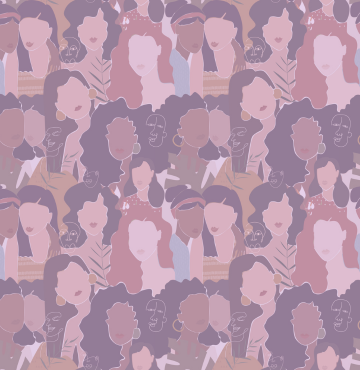There was this trending audio on TikTok from a creator @biggestswave, who spoke about the designs of homes, emphasizing that he wanted to enter a space and be able to identify that, “an African lives here.” I instantly knew what he meant.
The dominant aesthetic we’ve seen over the last decade in home spaces is minimalism; white couches in palettes of cream, tan, and grey. There’s even a shade called “millennial grey.” In a time where so many people are documenting their homes on Instagram, YouTube, and now TikTok, luxury has become synonymous with minimalism.
To be grown is to be clean. Not in the dust your shelves kind of way. But, in the way that makes your home look like a furniture showroom; unlived in, pristine, with subtle touches of personality that are easy to miss because the minimalism swallows the room.
I have nothing against minimalism. For some, it works beautifully. In fact, at one point, I found myself subconsciously drawn to it. Who doesn’t want a clean, sophisticated space? I’ve always wondered about the sustainability of maintaining it, but so many people were doing it, I figured it must be doable.
Still… it just didn’t feel like me.
I recently had the revelation that my style is not minimalism. In fact, far from it. I am inspired by maximalist, artistic spaces. Bold color on the walls. Statement furniture. Color blocking. And my favorite part: displays. A room with vinyl records on the wall. Books that celebrate Blackness. Storytelling art that reaches out to you.
It’s a feast; for the heart, the mind, and the soul.
I love being immersed in spaces that feel curated by intention, culture, and history. The creation of a space that holds room for the past, honors the present, and welcomes whatever the future is meant to create. These kinds of rooms minister to the people who live in them.
One of the great gifts of Black filmmakers is the authentic set design that brings the viewer to a place and time that is relatable even if they are unfamiliar with the experience. Like movies, sometimes when I look at maximalist homes, I feel like I can hear them. I can imagine the type of music that is played in that space. The echoes of the conversations and thoughts that are provoked by lovers, friends, and collaborators alike lingers. Even that generational cackle that comes from your soul dances in the atmosphere.
A fit check in the mirror before one makes an exit is the prequel to the world turning into a runway. The children growing up there can’t fathom a world that does not appreciate how majestic they are because of how much home reminds them at every turn. Even in the silence of the parents the space is a testimony, speaking to the children who are nurtured in it.
Lately, I’ve been wishing I realized sooner the power of archiving the moments I’m living rather than always rushing into the next thing. As a millennial, I’ve been privileged to witness so many evolutions in technology. But with each upgrade, we’ve lost something.
CDs I can’t play anymore because I don’t have a boombox. VHS tapes. DVDs. An old iPod that won’t turn on. There was a time we owned what we consumed. Today, we pay monthly to rent access to our memories through streaming services.
Maximalist spaces, for me, are a form of resistance and remembering. They are bold art, deep color, archives of history, unique furniture, craftsmanship. They are proof that we were here—and we lived well. They are the stillness and vibrancy, the soul and the texture, the character of us.
I want to create that.
Live in that.
Pass that down.
I want my home to be a witness. To remind me, and anyone who walks in, that I come from color, sound, survival, and spirit. I want my space to be a proud echo of the African diaspora—maintaining the pulse of history, innovation, resilience, and the audacity not only to survive, but to create with elite-level creativity and genius.
We are the blueprint.
Imitated, never duplicated.
So yes, when you come here, know:
An African lives here.
What would someone learn about you just by walking into your home?




